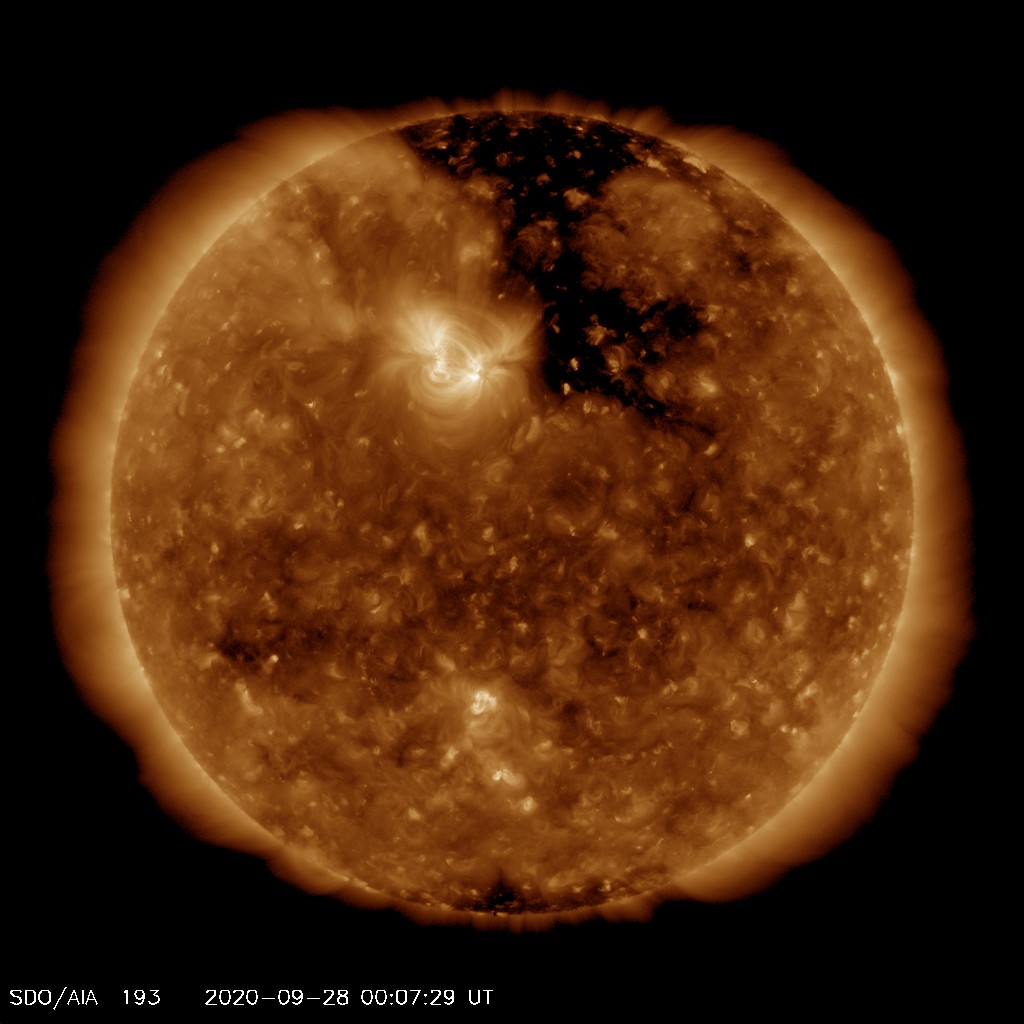Space Weather Alert - 28th September 2020
What Has Happened?
A large southern extension of the northern polar coronal hole reached an Earth facing position on the 26th of September 2020. Solar wind speed started to increase on the 27th September and is expected to cause geomagnetic activity to increase significantly. An earlier high-speed stream from a limb of the same coronal hole arrived on Thursday 24th of September leading to a peak of STORM G2 geomagnetic conditions (see NOAA space weather scales for more details about these storm levels).
Geomagnetic activity is likely to reach a maximum of STORM G2 within the next 24 hours as we are expecting fast solar wind speeds and are close to the autumn equinox. As the coronal hole is large in size, the high speed stream is likely to remain geo-effective for the next couple of days, with further chances of STORM G1 periods possible.
Assuming clear, dark skies, there is a greater chance of seeing the aurora over the course of the next evening. Those in Scotland, northern England and Northern Ireland have the better chance if the weather is favourable on the 28th of September.
Sign-up to receive Geomagnetic Disturbance Alert emails.
Follow us on Twitter:
Follow @BGSauroraAlert for more occasional aurora alerts.
Follow @BGSspaceWeather for daily space weather forecasts.
Glossary
- BGS
- The British Geological Survey is one of the Natural Environment Research Council's Research Centres.
- Coronal Hole
- A region in the Sun’s outer atmosphere (corona) where hot material can flow unrestrained by its magnetic fields out into space.
- High Speed Stream
- A fast moving stream of solar wind, responsible for magnetic storms.
- Solar Wind
- The ever-present expansion of the Sun’s hot outer atmosphere into the solar system, which carries space weather within it.


